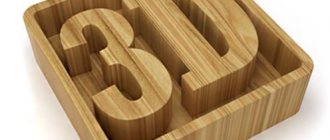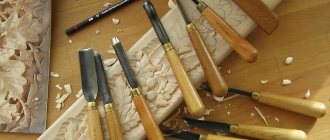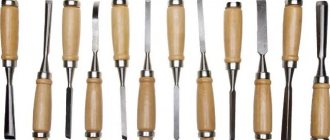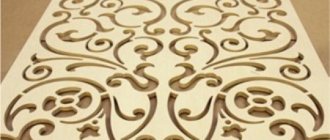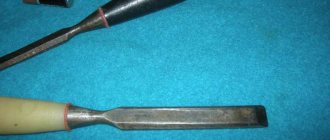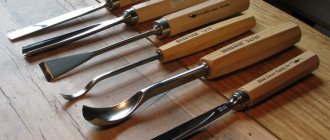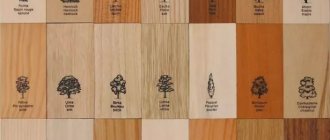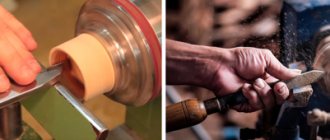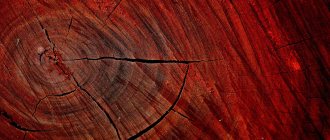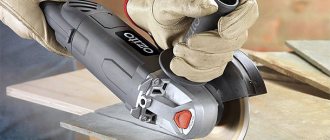Articles
All photos from the article
Wood carving is a rather complex type of decorative art. Moreover, the final result depends not only on the skills of the master, but also on many other factors, in particular, the quality of the wood plays an important role. Below we will look at what kind of wood professional carvers use for wood carving.
Wood carving
The importance of material quality
Not every wood is suitable for carving art. Since materials have different properties: moisture, strength, softness, flexibility, etc. Therefore, the choice of a specific option depends on:
- simplicity and speed of processing of workpieces;
- visual appeal of the product;
- the ability to make small and complex ornaments;
- durability of the product (figurines, furniture, etc.).
Which tree to choose with all the variety of species? The selection of a specific material is largely determined by the technique in which the master works.
So, for sculptural carvings, it is recommended to use durable wood species: oak, cedar, etc. And for relief or geometric carvings, it is recommended to use linden, birch and alder, which are soft and flexible.
Tips for beginners: what wood is suitable for wood carving?
Wood carving is one of the most ancient crafts that fascinates everyone who is interested in this art. Anyone can start carving wood by learning a few simple lessons for beginners and then improving their skills in practice. Moreover, this craft does not require much expenditure, since they only need the necessary tools and wood to practice it.
The question of choosing a wood species for carving is one of the most pressing for beginners. As you know, there are soft and hard varieties of wood, which differ in density, thickness and porosity of the fiber, moisture content and flexibility. Ever since the times when wood carving was not just an art, but an activity necessary for organizing everyday life, linden has become a favorite material for the manufacture of various products.
The peculiarities of the structure and quality of linden as a material for a carver are obvious: it is a soft, pliable wood with a fine-fiber structure that provides excellent opportunities for skillful work not only for experienced craftsmen, but also for beginners. The most delicate and elegant patterns can be created on linden workpieces, and the natural color – even white – eliminates the need to take into account texture features during the work process.
Other species that are also well suited for the carver are birch and alder. Birch is famous for its softness, so many beginners begin to master wood carving with this material, which is available in any part of Russia, including its cost. Most of all, birch is suitable for the basics of this art - cutting out simple geometric shapes, which allows you to “get your hand.”
Alder is widely used in arts and crafts. Its wood, after being cut, changes its color, which first becomes red and then pink. The structure of alder is not as uniform as in the case of linden, but, nevertheless, it cuts well.
Beginners in wood carving are not recommended to start working with hardwoods - oak, pear, walnut and others. They are more difficult to cut and finish, and tools need to be sharpened often, so you should start mastering such wood after practicing your skills on soft wood. Oak and walnut are used to make products that require strength and durability: doors, chests, collectible dishes, etc.
Thus, experienced wood carvers advise beginners to master this art from soft woods that do not dull tools, are easy to cut and allow you to gain the necessary skills.
Source
Popular breeds
Hand carving can be carried out on blanks of various woods. However, there are several most popular breeds that are preferred. Among them:
- Linden. Workpieces made from this rock lend themselves well to processing with cutters and chisels. The wood itself has a fine-fiber structure, thanks to which craftsmen can create complex and delicate ornaments. The even white color of linden is another reason why carvers choose this particular species.
- Alder. What kind of wood is used for wood carving if the craftsman needs a unique shade of the species? First of all, of course, alder. Such wood changes color: initially the workpiece is white, but over time it acquires a reddish tint, and then light pink.
- Birch. It is easy to process, so it is often used for relief and geometric carvings. Due to their low strength, birch blanks are used in the manufacture of paintings, panels and other decorative items.
- Oak. What kind of wood is needed for carving if the master wants to make a figurine or decorative furniture? Oak will be the best choice. It is characterized by high strength, durability, and resistance to damage. That is why benches, chairs, kitchen utensils, etc. are made from oak.
What trees are suitable for carving, besides the species mentioned? First of all, it's maple. Its wood is similar in color to birch, but has an attractive texture and hardness. Maple is more difficult to process with cutters (small chisels, cerasics, cranberries, etc.), so large ornaments and relatively simple patterns are created on the blanks. Pine, cedar, yew and fir are also widely used in carving art. They need to be better prepared before work, since the rocks contain a lot of resins.
Related materials:
- DIY wood carving
- All about wood carving tools
- High-quality woodworking tools: choosing the right ones
Which wood is best for wood carving?
Linden is the best material for a beginning woodcarver.
Linden has a soft, uniform structure, fairly viscous wood, which is equally easy to cut along and across the fibers, and is little susceptible to warping and cracking.
As a rule, small objects are made from linden wood: carved toys, dishes, boxes, shelves, wall decorations.
✔ Poplar is close in properties to linden, but when carved it can easily chip. Therefore, it is best to perform large-relief carvings on wood of these species.
✔ Oak is considered a classic material for carving. It has a uniform density in the dark and light areas of the annual layers despite the large-structured striped structure, as well as viscosity and unusual strength. But oak wood is hard and brittle, making it difficult to carve. This breed is best used for the manufacture of large decorative elements, as well as overhead parts. Oak is well turned, painted and polished. Allows you to perform both monumental and small chamber compositions.
✔ Walnut cuts well in all directions and does not chip, so it can be used to make the finest carvings. Walnut wood is used to make furniture and highly artistic small carved items.
✔ Beech is close to oak in hardness, but chips even more. It paints and finishes well.
✔ Pear is easily and cleanly cut in all directions, warps little and is well painted and finished, but has high hardness. Its wood is used to make small souvenirs with relief carvings and applied decorative parts for furniture.
❤️If you liked the article, like it and write in the comments what type of wood you use in carving
Source
Quality criteria
How to choose wood for carving, given that the materials differ in properties? When preparing, it is important to consider:
- Humidity. This indicator directly affects the durability of the finished product. Excessive moisture in wood can lead to deformation, cracking, and loss of attractive appearance. Therefore, freshly cut material is not suitable for processing. If there is a need to create relief and ornament, craftsmen choose dry blanks with a humidity of about 8%.
- State. What wood is absolutely not recommended to use? One that has knots, growths and other defects. This material is difficult to process due to twisted fibers. They prevent the master from moving the tool in the desired direction. In addition, chips and cracks form faster at the site of knots, which leads to product breakage.
- Weight. The heavier the material, the higher its strength. Therefore, craftsmen try not to use heavy wood when making panels, paintings and other products that require delicate processing. Heaviness can also indicate high humidity.
This is basic information about which wood is best to choose for further carving. When selecting a specific workpiece, craftsmen are also recommended to always take into account the technique in which they are going to work.
Wood selection
Not every wood is suitable for cutting.
Therefore, its choice is a crucial stage, which determines such points as:
It should be noted that there are no clear instructions on the choice of material, since experienced carvers use different wood for different purposes. However, there are some general rules that must be followed. Next we will take a closer look at them.
Breed
So, in order to choose the right material for wood carving, of course, first of all you need to pay attention to the type of wood.
Since ancient times, hardwoods were most often used for carving, such as:
Features of preparation
Choosing wood is the initial stage. After the master has decided on the breed, he will need to prepare the material. This measure is necessary in order to prevent early damage to the product and deformation. How to prepare wood for carving, what methods exist?
The main method is drying. This procedure helps remove excess moisture that accumulates in the wood. It is optimal if the material is dried in fresh air. It is important to reduce humidity to a level of 15–20%. The drying procedure itself can take a long time - several months if the workpieces are large.
As soon as the humidity reaches the required levels, the wood is brought into the room (away from heating devices). This is necessary in order to further dry the fibers of the material. It is advisable that the moisture content in the workpiece does not exceed 8–10%.
How to prepare wood for carving using alternative methods? Masters can use the digestion method. This method is suitable for preparing small-sized workpieces. To do this, they are placed in boiling water, boiled over low heat for several hours. This procedure helps to quickly and effectively eliminate intracellular moisture in the fibers of the material. After such heat treatment, the workpieces must be dried for a week (on average).
If you don’t know what kind of wood is suitable for carving with chisels, or how to properly prepare the material, but at the same time you want to become the owner of original products, the craftsmen will help. Our specialists are experts in the production of unique carved furniture, souvenirs, and figurines that connoisseurs of exclusive items can order.
Wood for wood carving: features of materials, and what types of wood are best to choose?
If you are a beginner carver, one of the first questions you might ask is: what is the best wood for wood carving? The material is really very important in this craft. All creative ardor can cool down if the carver has chosen the wrong wood for his endeavors. In this article, you will learn what kinds of wood there are, what “hot” varieties are suitable for carved creativity, and also what the criteria for the quality of the material are made up of. And to top it off, you’ll learn how to prepare wood for carving.
When indicating the degree of moisture in wood, the following terms are used:
- wet (soaked in water)
- freshly cut (conifers have more than 82% moisture, soft-leaved - 60-90%, hard-leaved - 35-75%)
- dry (stored outdoors, humidity 15-20%)
- room (stored indoors, humidity 8-12%)
- absolutely dry - humidity approaches 0%.
Two methods are used for drying: open and chamber. When drying openly, the wood is placed outside under a shed or in a shed; this method requires a lot of time. With the chamber method, wood is dried in special chambers of various volumes with a special temperature regime. This method dries the wood faster, but it is less accessible and more expensive.
When choosing wood, you need to take into account the place of use. If the product will be placed outside, it should be dried outdoors. Material for indoor products should be dried in room conditions.
Conclusion
When choosing wood for carving, there are a few things to consider. The main ones are the type of wood, its moisture content and quality. Beginners can be recommended to use linden with a humidity of 8-10 percent.
You can get additional useful information on this topic from the video in this article.
| State | Some growths, knots and other inclusions can significantly spoil the work or lead to certain problems. For example, twisted fibers can make the tool difficult to point in the desired direction, especially when moving across the grain. Therefore, when choosing materials for wood carving, you need to carefully examine them. |
| Weight | As a general rule, the heavier the wood, the more difficult it is to work with. In addition, it should be taken into account that weight indicates the moisture content of the material - the lighter the workpiece, the drier it is. |
